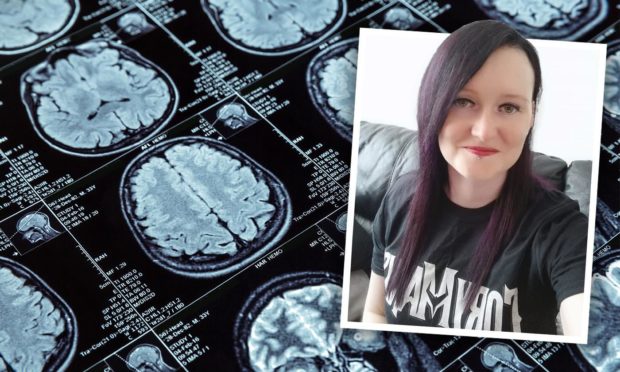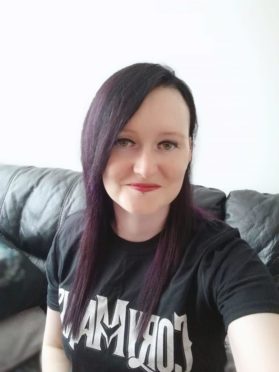55,000 people in Scotland are affected by epilepsy, with eight people receiving a diagnosis every day. To mark National Epilepsy Week, one Angus woman speaks out about how the condition impacts her daily life.
There are currently no local support groups in Angus or Tayside for epilepsy, a situation Kayleigh Clark from Arbroath is keen to see change.
Epilepsy is an invisible illness that affects those living with it in different ways.
Kayleigh has had epilepsy since birth and struggles with the unpredictability of the condition, as well as the lack of independence.
Kayleigh explains: “My journey with epilepsy has been hard and very scary as I never know when a seizure is about to come on.
“The main thing for me would be I don’t have much independence and I have to rely on my mum a lot.
“I sometimes feel isolated so when I get a chance to catch up with a friend it is such a blessing.
“Living on my own, there are things I can’t use such as the hob, the iron or any sharp knives.”
What is epilepsy?
Epilepsy affects the brain, causing unpredictable seizures and other health problems.
Seizures are bursts of electrical activity in the brain that temporarily affect how it functions. Seizures affect people differently and there are many different kinds.
Epilepsy can start at any age, but most commonly begins in childhood or after the age of 60. It’s often lifelong, but can sometimes improve over time.
Epilepsy is a chronic medical condition that for many people can be successfully treated. Unfortunately, treatment doesn’t work for everyone and there is still a great need for more research to be done in all aspects of the condition.#TalkEpilepsy #Epilepsy #Medication pic.twitter.com/WVxNue4qqg
— Epilepsy Scotland (@epilepsy_scot) May 21, 2021
Campaigns such as National Epilepsy Week help with raising awareness and funds for those living with the condition.
Kayleigh continues: “It is important that we celebrate National Epilepsy Week for many reasons: first for all the people that are fighting this condition.
“Also, being able to have a bigger chance to advocate epilepsy as I feel that invisible illnesses get pushed aside. There is no support in Angus or Tayside for epilepsy: something that I hope can change.”
Though there aren’t currently any local support groups in place, virtual online sessions are run by Epilepsy Action, and there are other ways to get involved and lend a hand to the cause, as Kayleigh explains:
“I contacted Epilepsy Scotland and asked about volunteering for them. Since, I have volunteered with children and with the online youth group, too.”
Volunteering is a valuable way to give back to the community and share your experiences of epilepsy with others who may be newly diagnosed or struggling with the condition.
#BeyondCovid
Living with the condition can bring many challenges, but there is support available for those who need it.
To celebrate National Epilepsy Week, Epilepsy Scotland has teamed up with other epilepsy charities to raise awareness of how the pandemic has impacted people living with the condition.
Research by the charity found that 80% of those surveyed said their mental health and wellbeing had been impacted by Covid-19.
80% surveyed in our #epilepsy and #COVID19 survey felt the pandemic had an impact on their mental health. If you are struggling, please call our freephone helpline on 0808 800 2200. Don’t be alone, reach out, we are here for you. 💜#BeyondCovid #EpilepsyWeek #MentalHealth pic.twitter.com/3bmabxTi6v
— Epilepsy Scotland (@epilepsy_scot) May 27, 2021
Meanwhile, 44% surveyed said their seizure activity increased during the pandemic.
For some, the pandemic has also impacted their routine health check ups and access to medication.
For those living with epilepsy, staying positive and celebrating the small achievements can make all the difference, as Kayleigh explains:
“Remember you are not alone, all of us are in this together.
“The term ‘beating epilepsy’ does not have to be viewed as being seizure free. It can also mean getting through everyday life struggles and still managing to live your life the best you can.”

